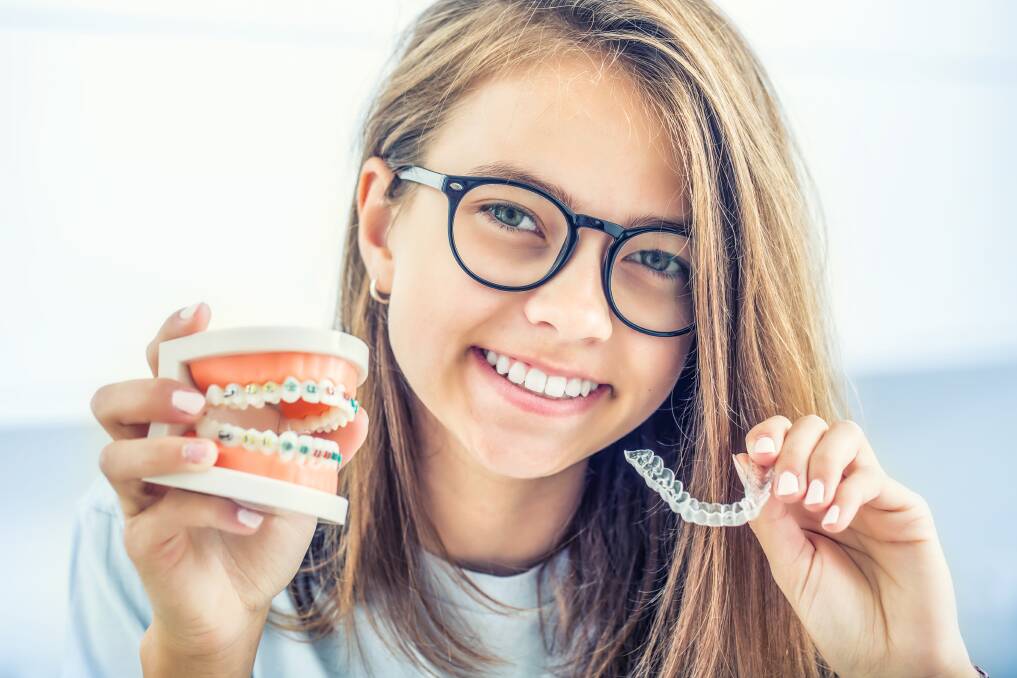Invisalign vs braces


Having a gorgeous smile isn't just about the straightest, whitest teeth; it's about your confidence in sharing your smile with the world. Invisalign and braces are just tools to help you feel more confident about your smile by straightening them. But which one is better? Invisalign or braces? Let's put these options under the microscope to see which one is better for you.
What is Invisalign, and how does it work?
Invisalign is a device offered by the brand Invisalign that corrects crooked teeth. They're also known as invisible braces as they utilise clear, custom-made mouthpieces from medical-grade plastics to pressure your teeth, slowly guiding them to the right position.
A major difference with Invisalign is that they are clear, offering users a discreet alternative to traditional braces. Invisalign providers design each Invisalign to suit the user perfectly, and as a bonus, they can be taken out so they aren't permanent like braces.
Benefits of Invisalign
Invisalign was created as an alternative to braces. Offering people with the need for braces a more discreet option so they can go on with their daily lives without feeling insecure about their smile because of braces. With that said, here are some benefits of Invisalign that make it stand out:
- Clear aligners like Invisalign fit your teeth tightly and are almost invisible, offering a subtle option compared to metal braces
- Invisalign aligners sit smoothly against your teeth, avoiding the cuts or discomfort often associated with braces
- Cleaning your teeth is straightforward with clear aligners. Just take them out, then brush and floss as usual without the hassle you'd face with braces
- With clear aligners, you remove them to eat, so you can enjoy your favourite snacks without worry
- Invisalign might mean fewer visits to the dentist than traditional braces. While clear aligners typically require check-ups every four to six weeks, some services even offer them without needing in-person visits, though this isn't suitable for everyone
Drawbacks of Invisalign
We always aim to provide you with all the knowledge you need to make a decision. So, while Invisalign is innovative and beneficial, it also has some downsides to keep in mind. Here are some downsides of Invisalign:
- They aren't suitable for everyone, especially people who need significant teeth correction
- While wearing Invisalign trays, you can drink water, but you should remove them when you eat or drink other items. This is because the aligners are made from a soft plastic that can be damaged by food, stain easily, and deform if exposed to heat
- To be effective, Invisalign aligners must be worn for 20 to 22 hours a day. Not wearing them enough can cause them to be ineffective
- Invisalign requires diligent dental hygiene to prevent bad breath and cavities. Users need to brush their teeth thoroughly after each meal or drink, which could mean much more brushing daily, especially for frequent snackers
- Some treatments might need small, tooth-coloured attachments that work with the aligners to move teeth more effectively. These attachments, which an orthodontist must apply and remove, can be seen through the aligners, and they need you to make more appointments with the dentist
What are braces, and how do they work?
Braces have been the go-to for tooth correction for a long time now. They use a stainless steel band, brackets and wires to gently correct crooked teeth over time. When installed, doctors or orthodontists will glue the bracket to each tooth and place a thin, flexible archwire over the brackets.
Ligatures (elastics) are then attached to keep the wires from moving. Braces need to stay on for roughly 12 to 24 months for them to be effective. They work by constantly exerting pressure on your teeth to change their position.
Benefits of braces
Braces have shown over time that they're an effective way of correcting crooked teeth and giving you that smile you've always dreamed of. Here are some benefits of using braces:
- Braces are a versatile solution that can handle everything from minor adjustments to complex dental corrections
- Though traditional metal braces are a cost-effective choice, there are alternatives like lingual (behind-the-teeth) and ceramic braces for those seeking a less noticeable option
- Braces are not designed to be taken out by the wearer; they're a more permanent option, unlike clear aligners
- With braces, you're free to enjoy your favourite hot or coloured drinks anytime. They're resistant to staining and heat, eliminating the concerns associated with removable aligners
Drawbacks of braces
Like Invisalign, braces also have a few downsides that you'd need to consider before choosing them. Here are some downsides of braces:
- Metal braces can be uncomfortable, requiring a period of adjustment and sometimes causing irritation or small injuries inside the mouth
- Traditional metal braces are very noticeable. Even though lingual and ceramic braces are less visible, they'll still show more than Invisalign
- People wearing braces need to avoid certain foods like gum, bagels, hard lollies, and popcorn, which can get caught in or damage the brackets and wires
- Unlike some treatments with clear aligners that manage adjustments remotely, people who wear braces need to visit the dentist for adjustments
- Metal brackets can lead to uneven tooth colouring over their typical two-year use
Final thoughts
Whether you go for the discreet look or opt for the proven method, braces or Invisalign are both well-equipped to improve the positioning of your teeth to give you the confidence boost you need to share your smile with the world.


